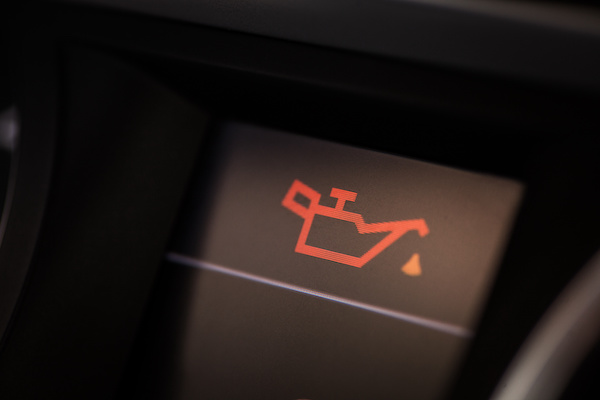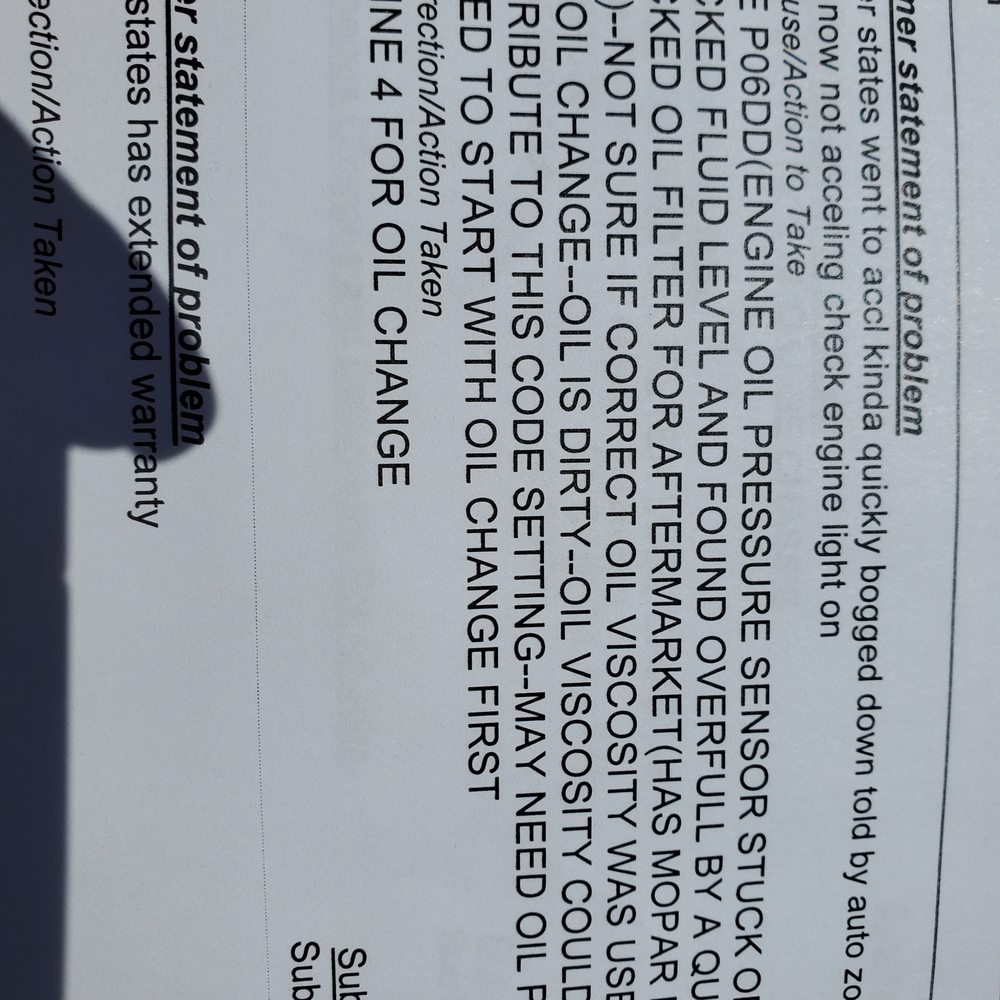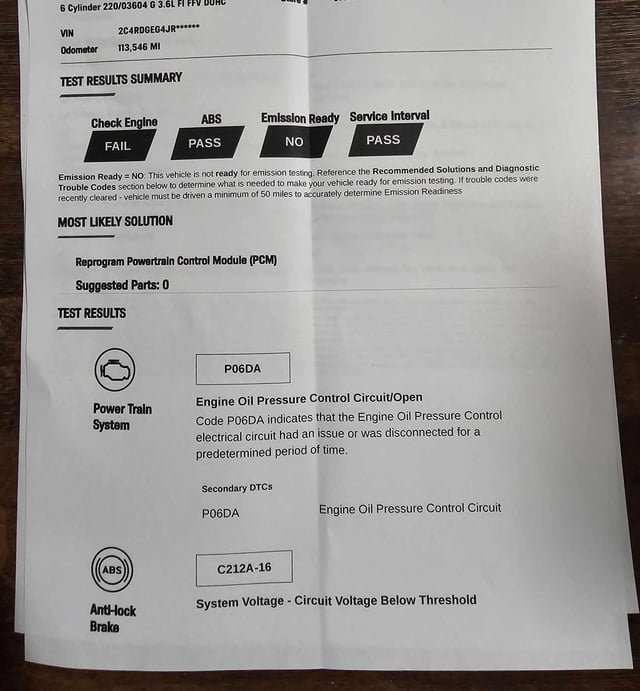When the Engine Oil Maintenance Light is on, immediate action is crucial to prevent engine damage. Ignoring the light can lead to catastrophic consequences, including engine failure.
It signifies low oil pressure, which requires prompt attention to avoid costly repairs. The warning light serves as a vital indicator of potential issues within the engine that must not be overlooked. Maintaining proper oil levels and addressing any oil-related concerns promptly is essential for the longevity and performance of your vehicle.
Remember, timely oil maintenance can save you from major headaches down the road.

Credit: www.ritaranchauto.com
Recognizing The Engine Oil Maintenance Light
The engine oil maintenance light is a crucial indicator that should never be overlooked. Understanding what this light signifies and how to respond to it can prevent severe damage to your vehicle’s engine. Let’s delve into the significance of this warning and how to interpret it.
What The Light Signals
When the engine oil maintenance light illuminates on your dashboard, it signifies that the oil pressure has dropped to a perilously low level. This poses a significant risk to your engine’s well-being. Driving with low oil pressure can lead to catastrophic engine failure, necessitating expensive repairs or even complete engine replacement.
Oil Pressure Warnings Explained
If the oil pressure warning light activates on your dashboard, immediate action is imperative. Ignoring this warning can result in irreparable damage to your engine. It’s crucial to check your oil level and quality, as well as inspect for potential oil leaks. Addressing these issues promptly can prevent severe damage and ensure the longevity of your vehicle’s engine.
Immediate Actions To Take
When the engine oil maintenance light comes on, it indicates low oil pressure, which can be dangerous for the engine. It’s crucial to take immediate action and not drive the vehicle, as low oil pressure can lead to severe engine damage.
Check the oil level and quality, and if necessary, top up or change the oil to ensure the engine’s proper lubrication.
Assessing Oil Level And Pressure
If the engine oil maintenance light comes on, it is important to assess the oil level and pressure immediately. Check the oil level by using the dipstick and make sure that the oil is at the right level. Low oil levels can cause the engine to overheat and damage the engine. It is also important to check the oil pressure gauge to ensure that the oil pressure is within the normal range. If the oil pressure is too low, it could mean that there is a leak or a problem with the oil pump.When To Stop Driving
If the engine oil maintenance light comes on, it is crucial to stop driving the vehicle immediately. Continuing to drive the vehicle can cause serious damage to the engine. Low oil pressure can cause the engine to seize up or even lead to a complete engine failure. It is important to turn off the engine and have the vehicle towed to a mechanic for a proper diagnosis and repair. Remember, regular engine oil maintenance is essential to keep your vehicle running smoothly and prevent costly repairs. If the engine oil maintenance light comes on, do not ignore it. Take immediate action to assess the oil level and pressure and stop driving the vehicle if necessary.Understanding Oil Change Indicators
When it comes to maintaining your vehicle, one of the most crucial aspects is monitoring the engine oil. Understanding the oil change indicators is essential for ensuring the longevity and performance of your car’s engine. The oil maintenance light serves as a valuable tool in this regard, providing timely alerts for necessary oil changes. Let’s delve deeper into the significance of these indicators and how to interpret them.
Difference Between Oil Maintenance And Pressure Lights
Oil maintenance lights are specifically designed to indicate the need for an oil change based on the vehicle’s predetermined maintenance schedule. On the other hand, oil pressure lights signal a drop in oil pressure, which demands immediate attention to prevent potential engine damage.
Interpreting The Urgency Of The Light
When the oil maintenance light illuminates, it signifies that the oil has reached the end of its effective lifespan and requires a routine change. While this requires prompt action, it doesn’t pose an immediate threat to the engine’s well-being. However, the oil pressure light demands urgent action as it indicates a critical drop in oil pressure, which can lead to severe engine damage if ignored.
Troubleshooting Common Causes
When the engine oil maintenance light illuminates on your dashboard, it indicates low oil pressure. Ignoring it can lead to serious engine damage. It’s crucial to address this promptly to prevent costly repairs or engine replacement.
Low Oil Scenarios
If the engine oil maintenance light is on, it may indicate low oil levels. Check the oil level using the dipstick to ensure it meets the recommended level. Low oil levels can lead to engine damage.Potential For Dirty Oil Or Leaks
Dirty oil or leaks can trigger the engine oil maintenance light. Regularly check for oil leaks under your car and inspect the oil for dirt or contaminants. Dirty oil can cause engine wear and reduce performance. Remember, addressing these common causes promptly can help prevent costly engine repairs down the line.Quick Fixes At Home
- Locate the oil dipstick in your engine.
- Remove the dipstick and wipe it clean with a cloth.
- Reinsert the dipstick fully and then pull it out again to check the oil level.
- If the oil is below the minimum mark, add the appropriate oil type for your vehicle.
- Repeat the process to ensure the oil level is within the recommended range.
Resetting The Maintenance Light
- Insert the key into the ignition and turn it to the “on” position without starting the engine.
- Locate the odometer button and press it until you see the odometer reading.
- Turn the key back to the “off” position and then back to the “on” position while holding the odometer button.
- Wait for the maintenance light to flash and then go off, indicating it has been reset.
- Start the engine to ensure the maintenance light no longer appears.
Credit: www.quora.com
Resetting Your Vehicle’s Oil Light
Resetting Your Vehicle’s Oil Light is an important maintenance task that helps ensure the optimal performance and longevity of your car’s engine. When the engine oil maintenance light comes on, it’s crucial to address it promptly to prevent potential damage to your vehicle.
Step-by-step Guide
Resetting your vehicle’s oil light involves a simple process that can typically be performed by the vehicle owner. Here’s a step-by-step guide to help you reset the oil maintenance light:
- Start by ensuring your vehicle is parked and the engine is turned off.
- Locate the reset button or information button on your dashboard. Refer to your vehicle’s manual if you are unsure about the location.
- Turn the ignition key to the “on” position without starting the engine.
- Press and hold the reset button for about 10 seconds or until the oil light indicator resets. Some vehicles may require a specific sequence of button presses, so refer to your owner’s manual for precise instructions.
- Once the light has been successfully reset, turn off the ignition and then start the engine to ensure the light remains off.
When To Consult A Professional
If you encounter any difficulties or uncertainty while attempting to reset the oil light, it’s advisable to seek assistance from a professional mechanic or your vehicle’s dealership. Additionally, if the oil maintenance light continues to illuminate after resetting or if it illuminates at irregular intervals, it may indicate an underlying issue that requires professional diagnosis and attention.
Preventive Measures And Tips
To maintain your engine’s health, it’s crucial to heed the Engine Oil Maintenance Light promptly. Ignoring it can lead to severe engine damage, necessitating costly repairs. Regularly checking and changing your oil as recommended can prevent this issue and ensure your engine runs smoothly.
Regular Maintenance Schedule
Regular maintenance is key to ensuring your engine oil remains in top condition. It is recommended that you change your oil every 3,000 to 5,000 miles or as per the manufacturer’s recommendation. By following a regular maintenance schedule, you can prevent the engine oil maintenance light from turning on.Choosing The Right Oil For Your Car
Choosing the right oil for your car is crucial. There are different types of engine oils available in the market, including synthetic, conventional, and high mileage oil. You should choose the oil that is recommended by the manufacturer for your vehicle. Using the wrong type of oil can cause your engine to wear out faster and can trigger the engine oil maintenance light.Checking Your Oil Level Regularly
Checking your oil level regularly is another important preventive measure. Low oil level can cause the engine oil maintenance light to turn on. You should check your oil level every month and add oil if necessary.Following The Manufacturer’s Instructions
It is important to follow the manufacturer’s instructions for your vehicle’s oil change intervals and oil type. The manufacturer knows what is best for your car and following their instructions can prevent the engine oil maintenance light from turning on. By following these preventive measures and tips, you can ensure that your engine oil remains in top condition and prevent the engine oil maintenance light from turning on. Regular maintenance, choosing the right oil, checking your oil level regularly, and following the manufacturer’s instructions are key to keeping your engine running smoothly.
Credit: www.strandesgarage.com
Understanding Dashboard Alerts
Oil Change Light Vs. Oil Pressure Light
When it comes to dashboard alerts, it’s crucial to understand the difference between the oil change light and the oil pressure light. The oil change light is a reminder to replace the engine oil based on the vehicle’s mileage or engine operating conditions. On the other hand, the oil pressure light indicates a drop in oil pressure, which requires immediate attention to prevent potential engine damage.
Interpreting Other Dashboard Signals
Aside from the oil change and oil pressure lights, your vehicle’s dashboard may display other signals that require interpretation. These signals could include the check engine light, temperature warning light, battery alert, and more. It’s essential to familiarize yourself with the meanings of these alerts to ensure prompt and appropriate action when they appear.
Frequently Asked Questions
Can I Drive With Oil Maintenance Light On?
No, it is not safe to drive with the oil maintenance light on. Low oil pressure can damage the engine.
What Does Engine Oil Maintenance Light Mean?
The engine oil maintenance light indicates low oil pressure, signaling potential engine damage if ignored.
How Urgent Is An Oil Change Light?
The oil change light is not an immediate emergency, but it should never be ignored. Driving with the oil light on can cause serious engine damage. It indicates low oil pressure, which requires immediate action to prevent costly repairs.
Why Does My Oil Maintenance Light Keep Coming On?
When the oil light comes on, it may indicate low oil pressure due to low oil, dirty oil, or an oil leak. Driving with the light on can damage your engine, so it’s crucial to address the issue immediately. Regular oil changes can help prevent this problem.
Conclusion
Driving with the oil maintenance light on is extremely risky as it signifies low oil pressure. Ignoring this warning can lead to severe engine damage, necessitating costly repairs. It is crucial to address oil maintenance lights promptly to ensure your vehicle’s longevity and performance.
Always prioritize engine oil maintenance for optimal vehicle health.


